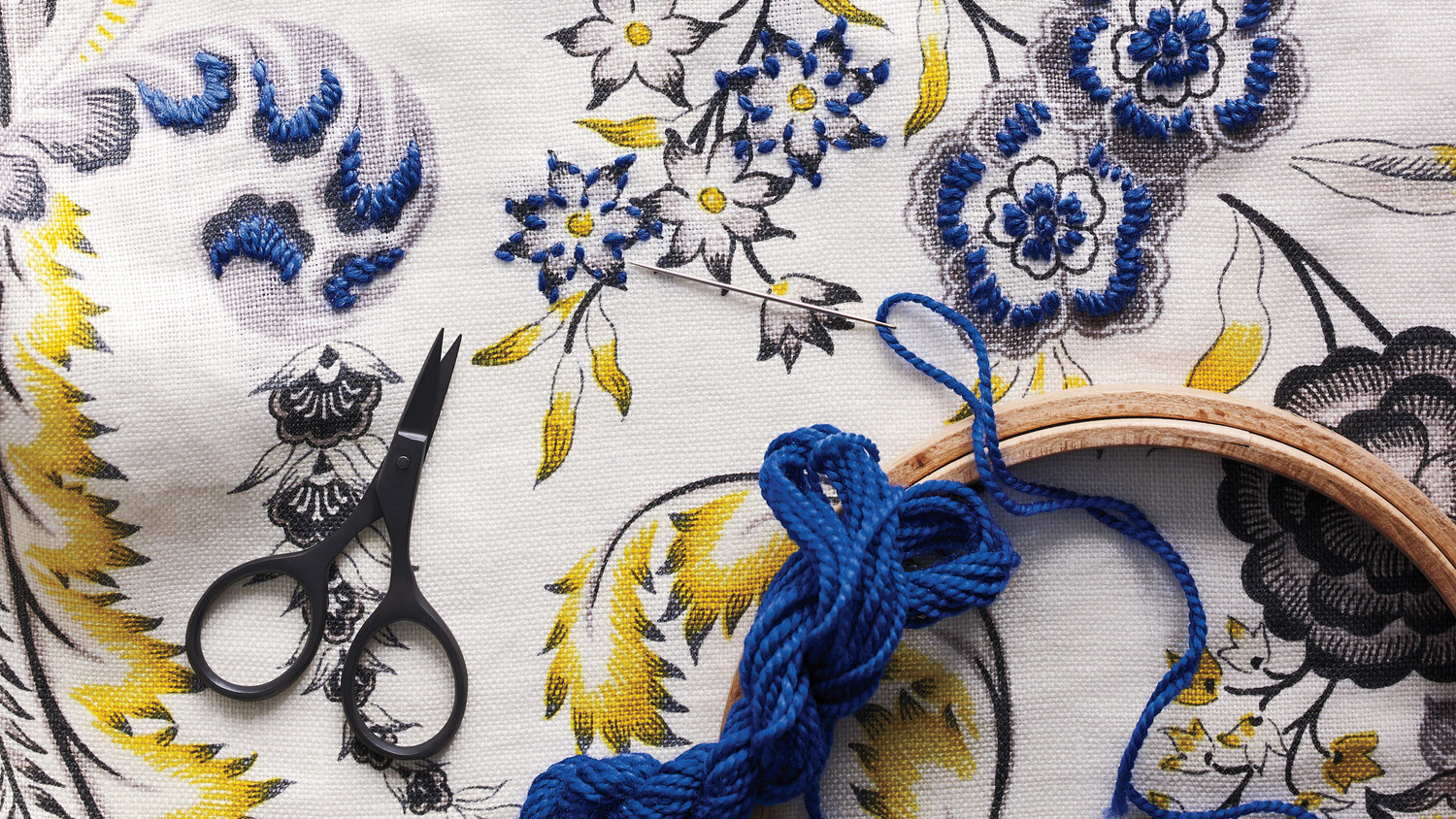
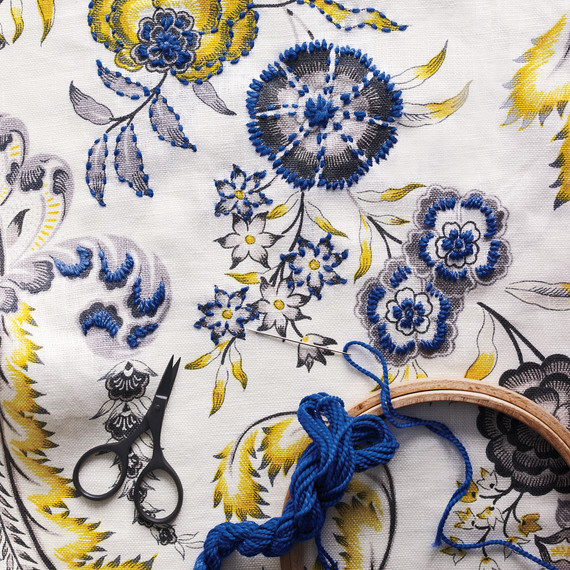
Photography by: NGOC MINH NGO
Royal Treatment
Yellow-and-gray floral linen gets a fresh update with bright royal-blue accents. Wool embroidery yarn has a substantial feel that gives the stitching a nice weight and depth. We used running stitches and French knots (see how-tos). When you embroider with wool yarn, the technique is known as crewelwork.
Lemongrass floral print, moodfabrics.com.
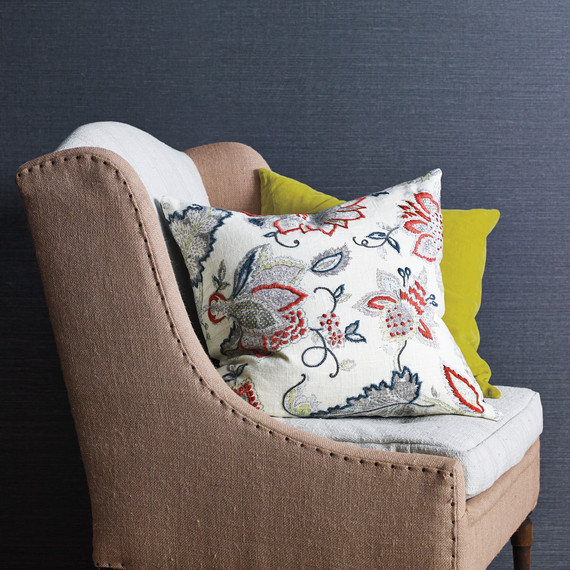
Photography by: NGOC MINH NGO
Pillow Talk
The addition of rich colors turns this otherwise subtle print into a bold, attention-getting pattern that can anchor a room. The pillow’s large-scale botanicals are outlined with silk-and-wool thread—which has a soft sheen—in two shades each of blue-gray and red. The chain stitch is excellent for stems, while the satin stitch can fill in larger areas, like the petal outlines.
Nobelesse bleached linen-viscose, bandjfabrics.com
Velvet pillow, in Citron, pehrdesigns.com
French Stripe chair, by Ralph Lauren, abchome.com
Haruki sisal wallpaper, in Charcoal, fschumacher.com
How-tos for homemade pillows.
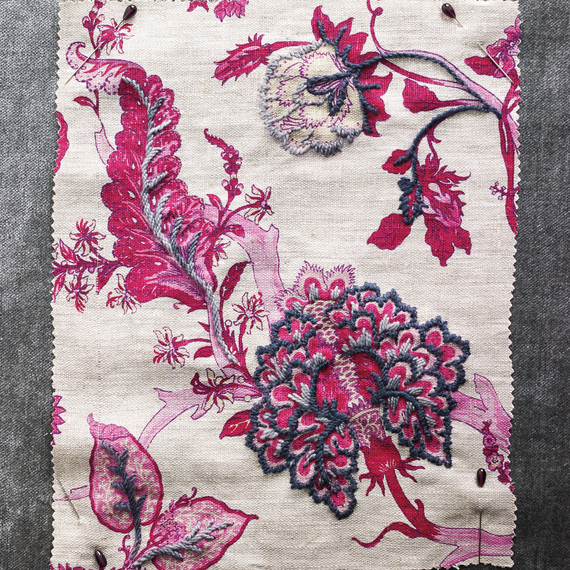
Photography by: NGOC MINH NGO
Blushing Beauty
Gray accents tone down the intensity of a pink-and-more-pink print, making it versatile and decidedly sophisticated. We used hand-dyed wool thread in dark and light grays, each with subtle variations in shading.
HL Ceylan linen, bandjfabrics.com.
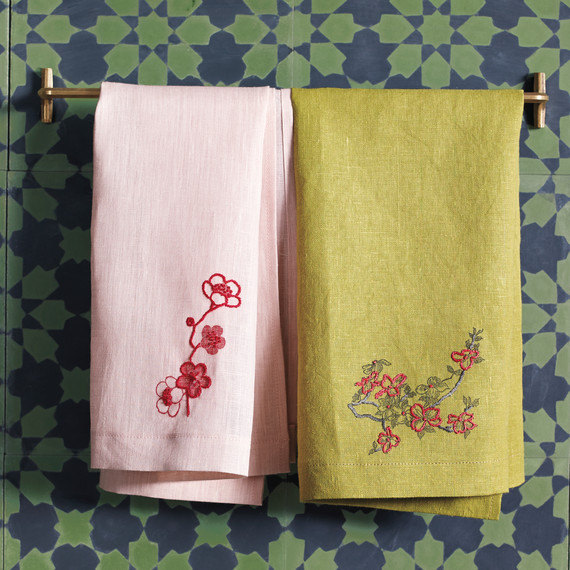
Photography by: NGOC MINH NGO
Stamps of Approval
Instead of starting with a patterned fabric, print your own with a bloom or two for a more understated effect: Use a rubber stamp to transfer a flower onto a hand towel (or other textile). Choose your fabric ink carefully, because the color will be part of the finished design. Embroider over part of the pattern—we used the stem stitch and French knots—and let the ink show through in other areas.
Futagami brass towel bar, in Large, dargitane.com
Fassia tiles, in Green and Black, mosaichse.com
Rubber stamps (similar to shown), paperpresentation.com
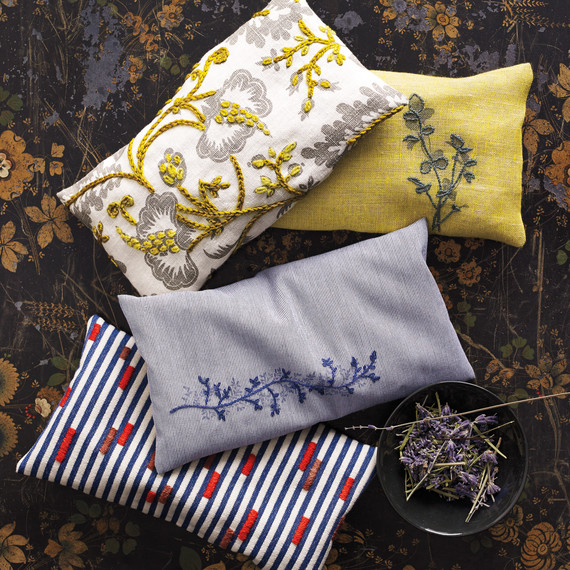
Photography by: NGOC MINH NGO
Small Wonders
Sachets filled with dried lavender require little in the way of fabric or time, making them the perfect way to play with the stitching techniques before moving onto a bigger project. Chain-stitched chartreuse wool thread pops on a white-and-gray print, top left; two sachets, top right and center, have rubberstamped designs highlighted with blue embroidery floss. Graphic prints invite embellishment as much as florals: Blocks of red satin stitching float between blue stripes, bottom.
Bologna linen (top), bandjfabrics.com
Sapphire-and-ivorystriped fabric (bottom), moodfabrics.com
Stamps (similar to shown), paperpresentation.com
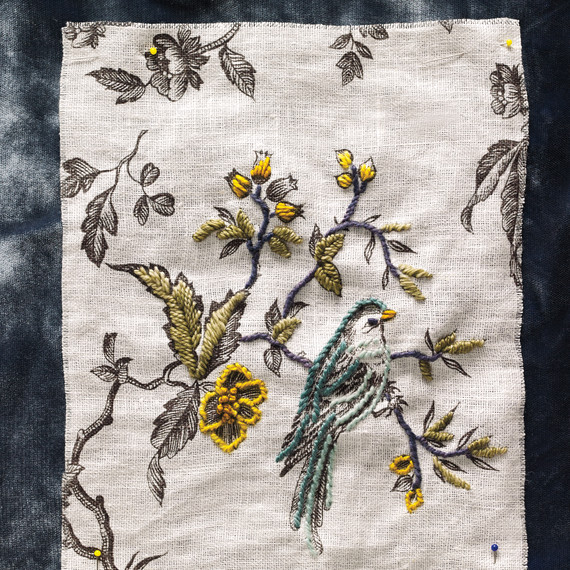
Photography by: NGOC MINH NGO
Feather Your Nest
Almost like a child’s coloring book, a black-and-white print comes to life with the addition of a few hues. The bird is worked in stem stitch and the leaves in satin stitch; both were done with hand-dyed wool thread.
HL-Pastorale black-and-white linen, bandjfabrics.com.
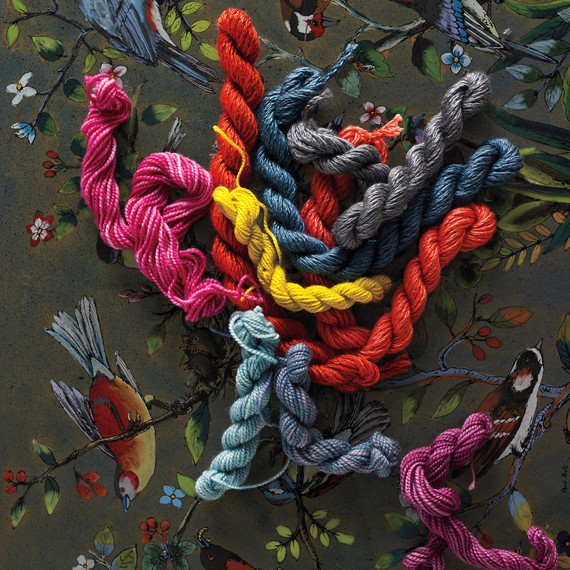
Photography by: NGOC MINH NGO
Nice Threads
Several kinds of embroidery thread are available, and it’s important to choose one with a weight that suits the weight of your fabric. A thick thread could pucker a thin fabric, for example. For most of the projects here, we used upholstery fabric, which is substantial in weight. We wanted our design to be raised, so we employed thicker threads. The silk-and-wool thread we used has a nice luster and multiple strands that can be divided to create lighter weights; the red, gray, and dark blue shown here are examples. Hand-dyed wool yarn has pleasing variations in color (as in the pink and pale blues shown here). The most familiar embroidery floss is cotton floss, which consists of six thin strands that can be divided. Using two or three strands is standard for average woven fabrics, such as the dish towels on page 97. The resulting designs are delicate.
Trio silk-and-wool needlepoint thread, by Brown Paper Packages, $5.50 a skein, annieandco.com
Koigu premium merino needlepoint yarn, $3.75 a skein, purlsoho.com
DMC embroidery floss, 39 a skein, michaels.com
Embroidery Basics
Here’s what you need to know to embellish fabric with textured designs. Our ideas are only a start—experiment with colors and stitches to create different effects. If you don’t like the result, you can always take it out and try again.
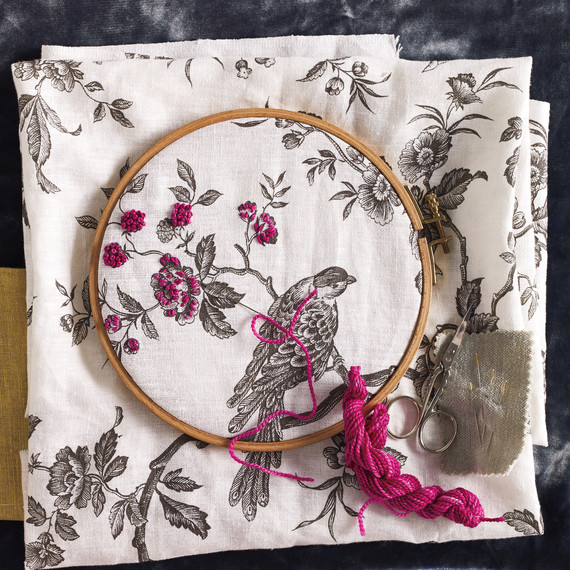
Photography by: NGOC MINH NGO
Hoop Dreams: Essential Supplies
1. Embroidery hoop
This holds the fabric taut to allow for even stitches. Very heavy or stiff fabric may not fit into a hoop but has enough “body” for you to work without one.
2. Needles
These may be called embroidery, crewel, or millinery needles. Match the needle to the thread and the fabric: For example, use a thicker needle with a larger eye with thicker thread on heavyweight fabric.
3. Embroidery scissors
These small, sharp scissors give you control when you’re snipping threads.
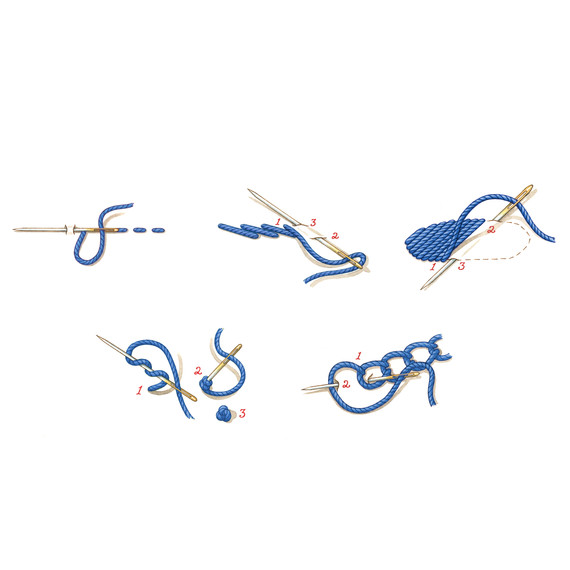
In Stitches
We used five classic embroidery stitches for the textiles on these pages.
Clockwise from top left:
Running Stitch
The simplest of stitches, this can make “dotted line,” or you can modify it and make individual stitches side by side, as we did for the blue flowers on page 94. Insert needle from wrong side to right, then reinsert nearby, making stitches and spaces even in size.
Stem Stitch
This creates a ropelike effect that is—no surprise!— good for flower stems and other lines. Insert needle from wrong to right side, coming out at 1. Insert needle at 2 at a slight diagonal and pull through at 3 (halfway between 1 and 2). Repeat stitching, keeping thread on left side of needle and making sure stitches are same length.
Satin Stitch
Made at an angle or straight across, these side-by-side stitches can fill in outlines. Insert needle from wrong to right side, coming out at 1. Insert needle at 2, and pull it back through at 3, right next to 1. Keep stitches tight and flat to ensure a smooth finish.
French Knot
These little raised dots can be used on their own or clustered to fill in an area. Insert needle from wrong to right side. Keeping thread taut with one hand, use other hand to wind over needle twice, 1. Reinsert tip of needle into fabric, as close as possible to where it emerged, 2. Before pulling needle through fabric, pull thread tight so knot is flush with fabric. Pull all the way through to finish knot, 3.
Chain Stitch
The chain stitch is good for stems and lines, but it’s thicker and more textured than the stem stitch. Insert needle from wrong to right side, coming out at 1. Making a loop, insert needle next to 1. Come out again at 2, holding thread under needle as you pull tight. Insert needle again next to 2 (inside new link) and continue.
SOURCE:http://www.marthastewart.com/1104504/tactile-textiles